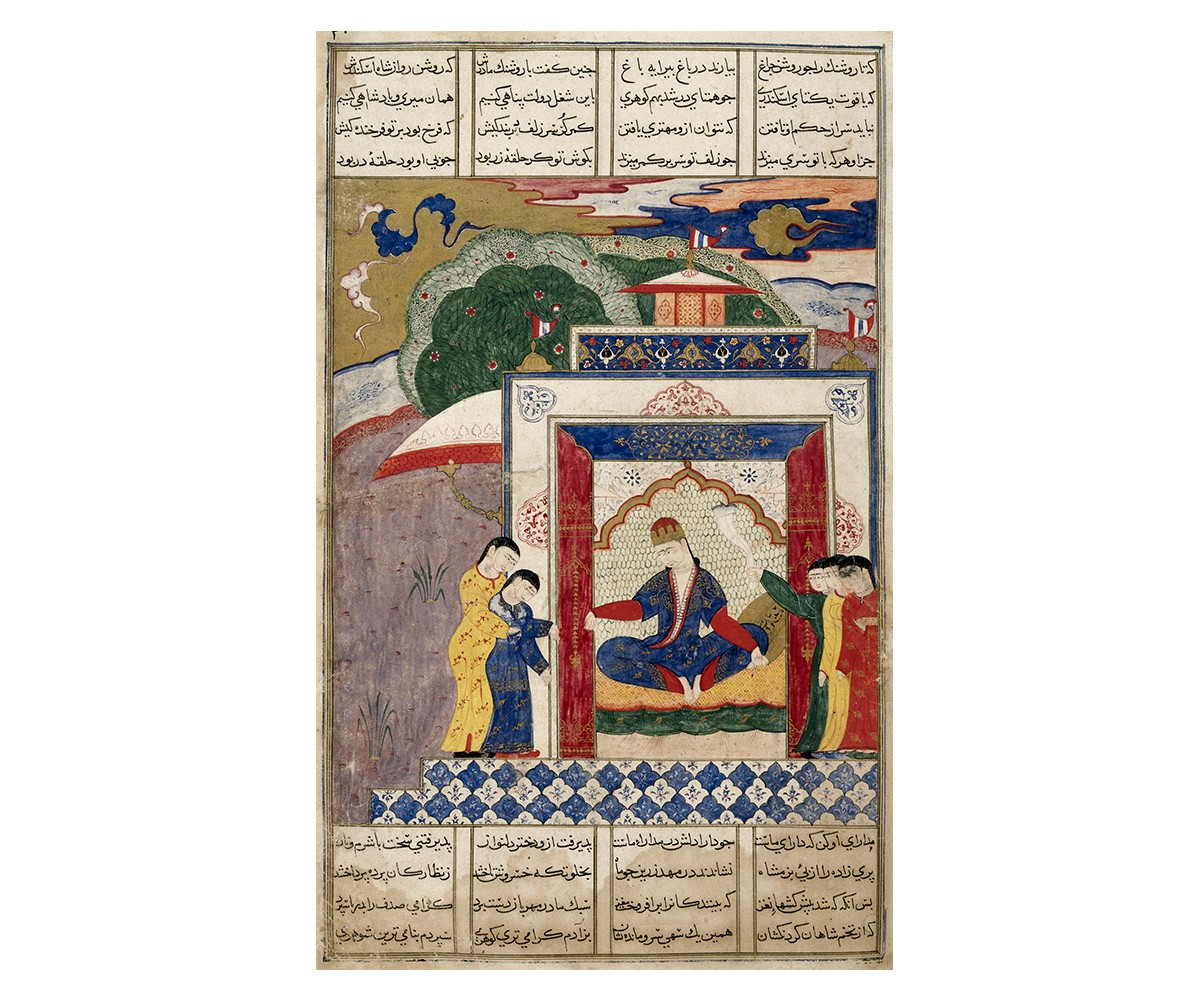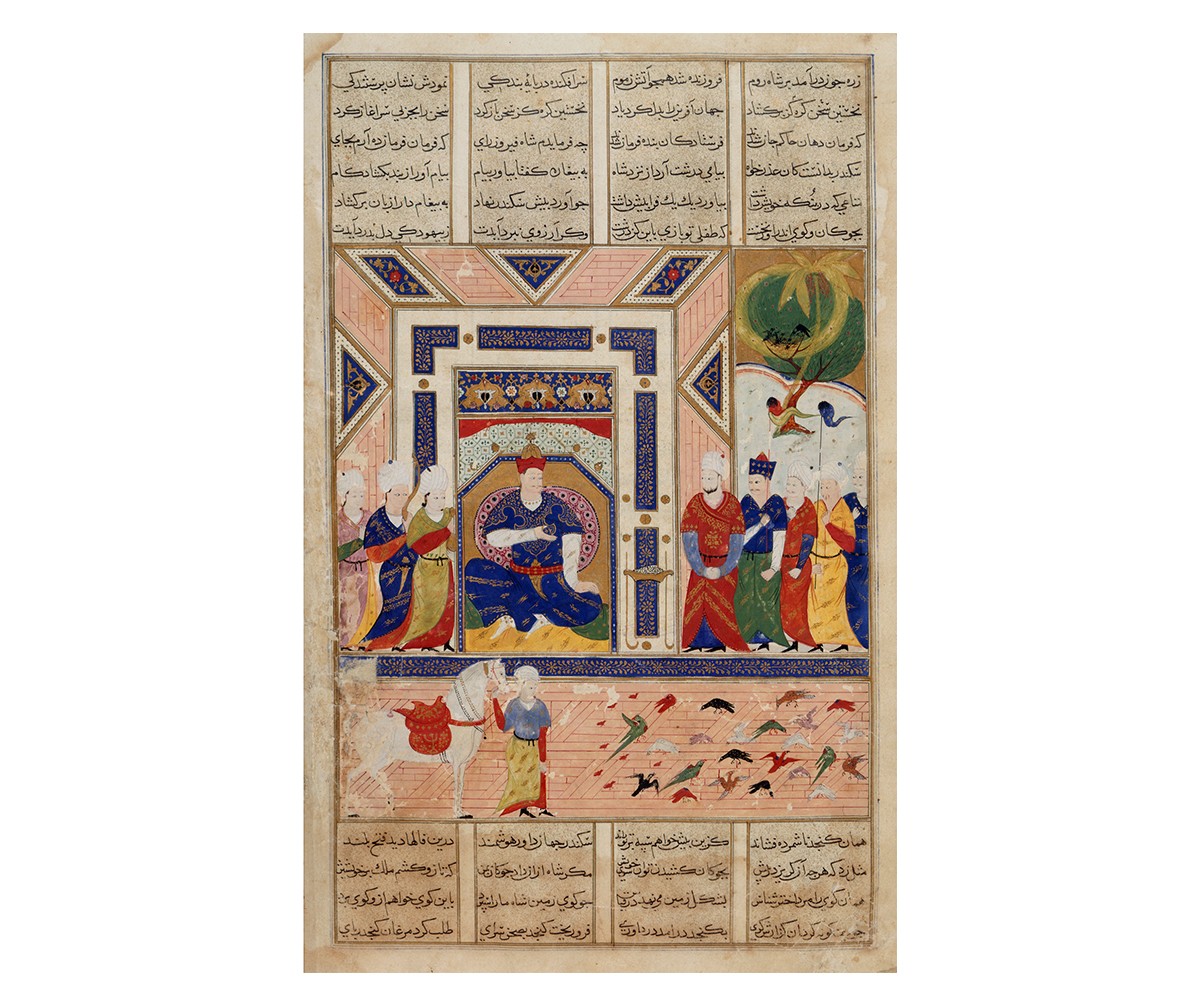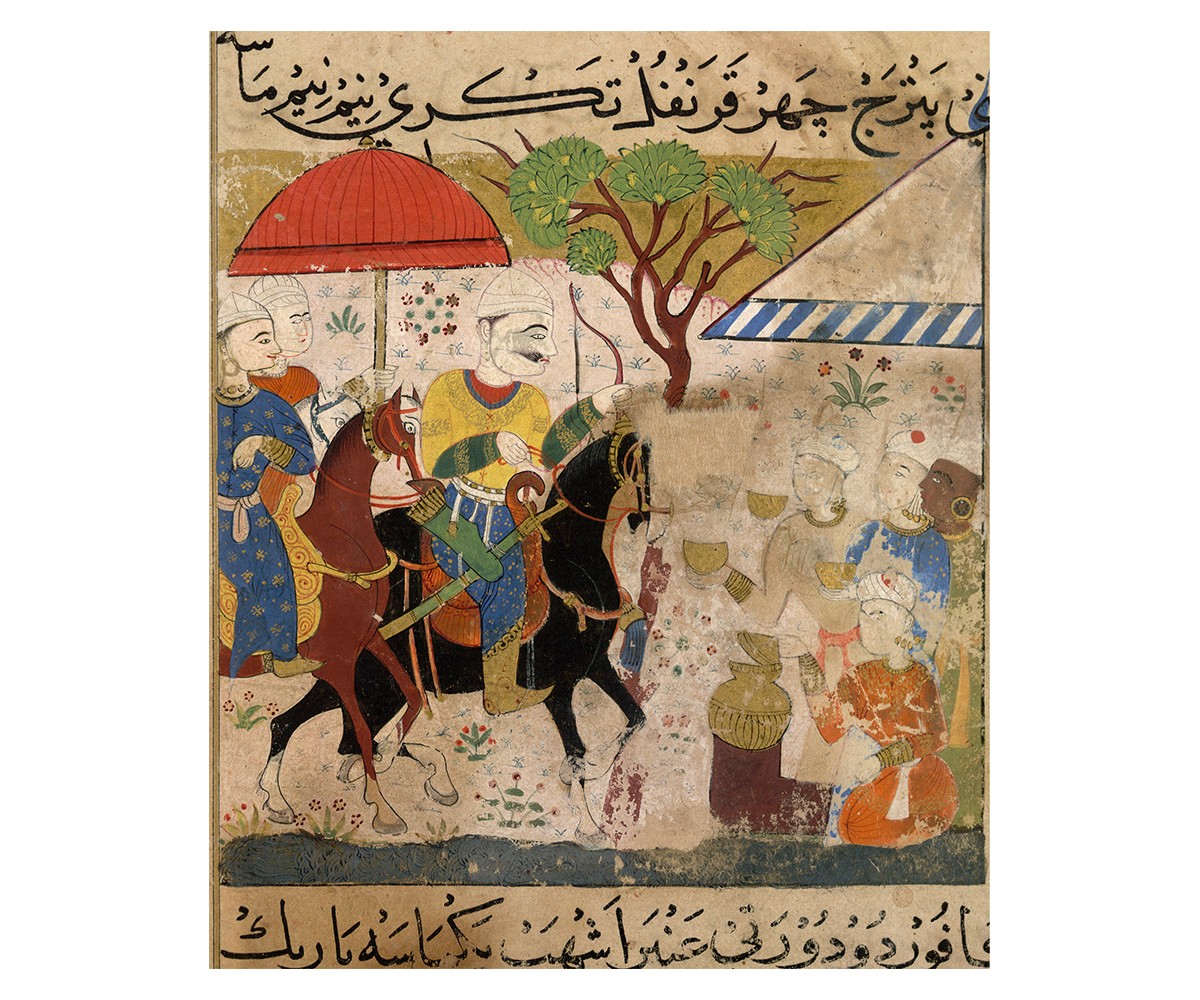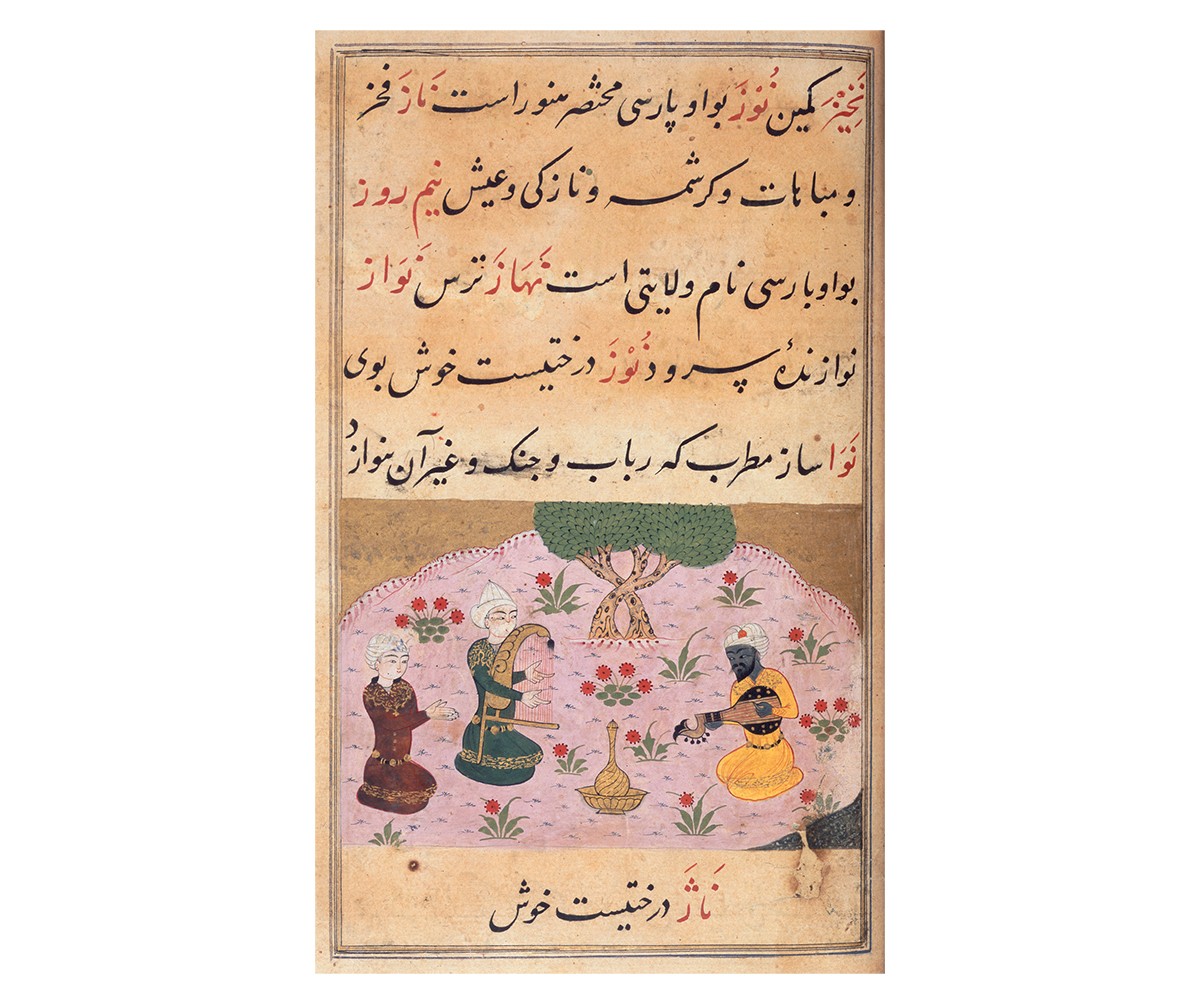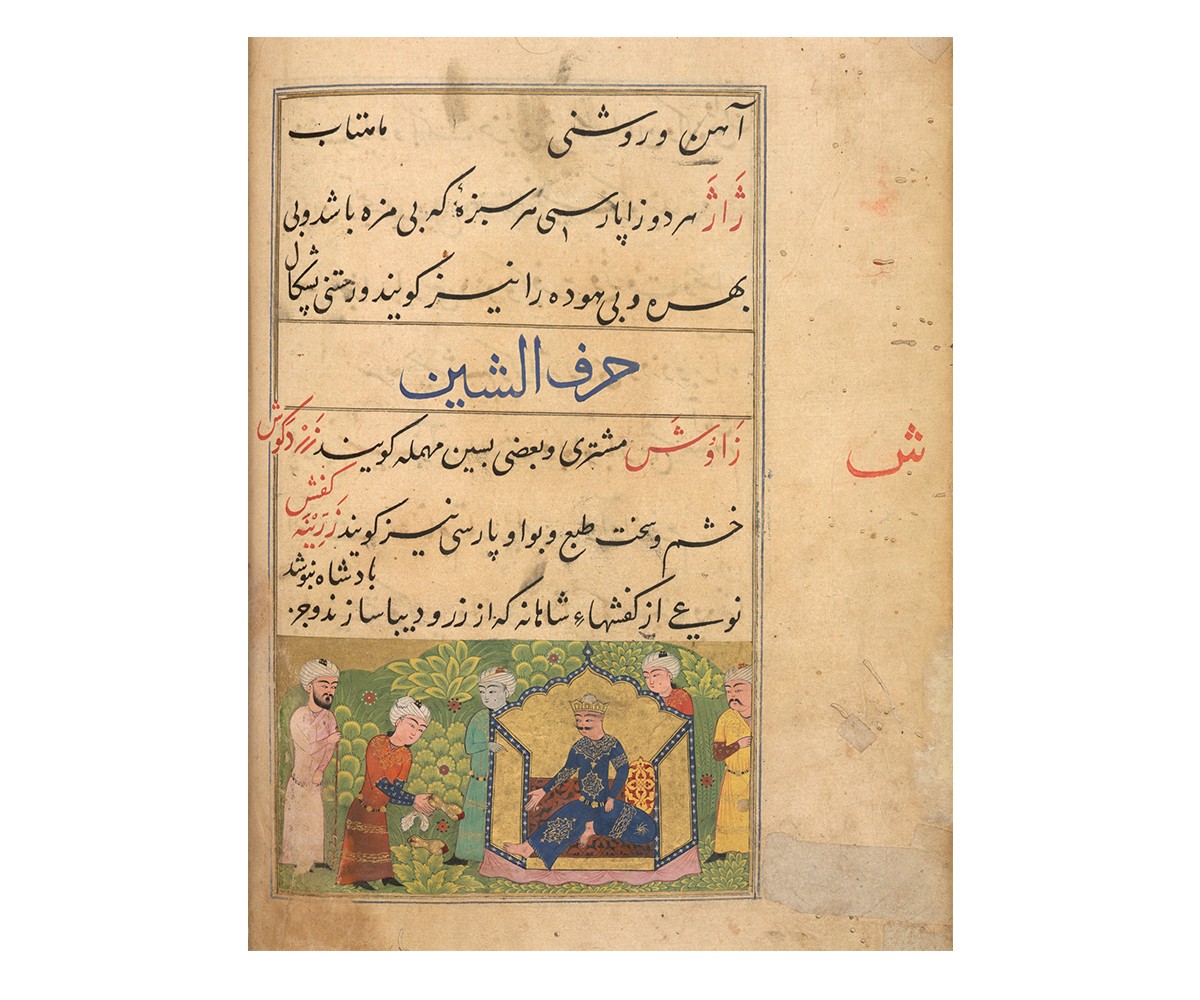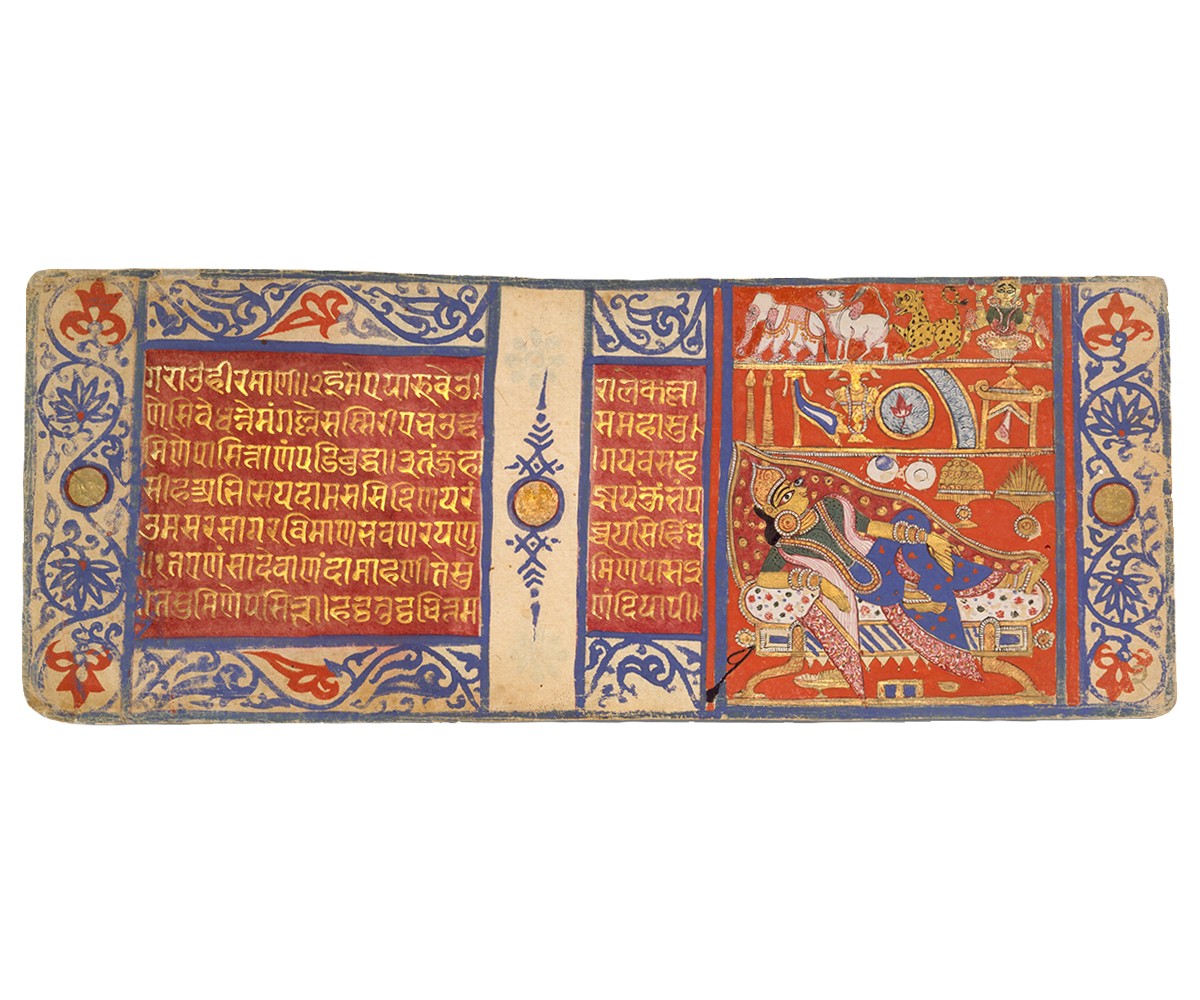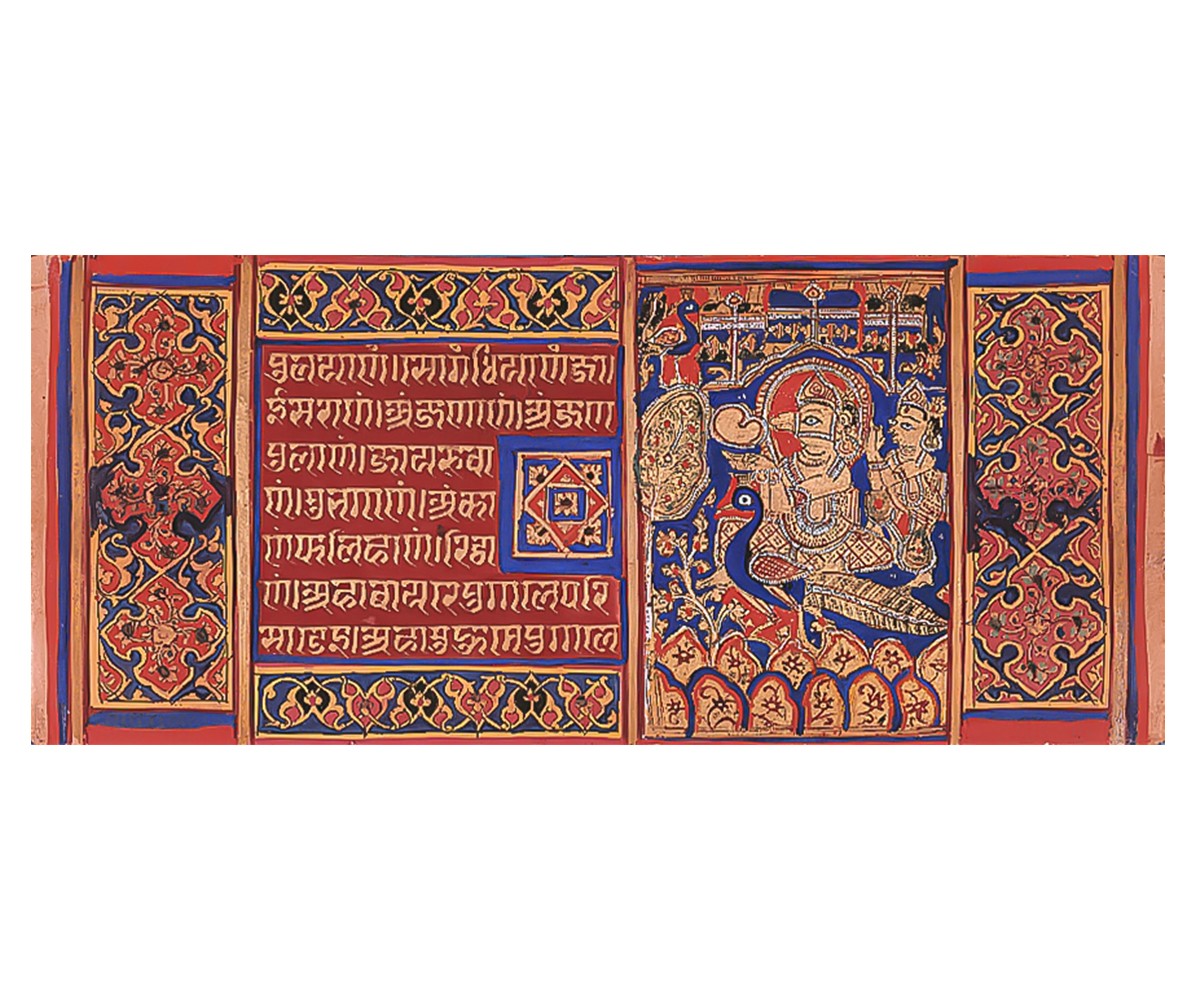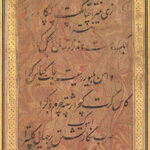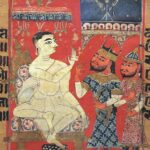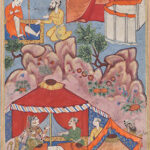Sultanate Painting Traditions
1500
Influenced by the art of the book in the wider Persianate world, emerging sultanates in northern India commission manuscript illustrations, such as the Sharafnama of the Bengal Sultanate (1531–32), and the Nimatnama and the Miftah ul-Fuzala of the Malwa Sultanate (c. 1500). These schools of painting produce a relatively small but historically significant number of surviving manuscripts. Alongside this, the increasing use of materials like lapis lazuli in Jain manuscripts of this period marks the influence of Persian painting in the subcontinent.
The Sharafnama in particular reflects an emphatically Persian style, indicated by the paintings’ high horizon line, costumes, and rendering of rock formations and clouds. Based on this, present-day historians speculate that the manuscript painting tradition in the Bengal region may be at least a century older than the Sharafnama, although no such books or folios survive. The Miftah ul-Fuzala, which can loosely be seen as an illustrated encyclopedia of Malwa’s material culture, is a valuable resource on everyday life in the kingdom. Like the traditions of other sultanates at the time, the Miftah ul-Fuzala also shows a strong Persian influence, specifically the Turkmen style prevalent in the late fifteenth century.
Bibliography
Beach, Milo Cleveland. Mughal and Rajput Painting. Cambridge: Cambridge University Press, 1992.
Flood, Finbarr Barry. “Before the Mughals: Material Culture of Sultanate North India.” Muqarnas 36, no. 1 (2019): 1–39. https://www.jstor.org/stable/26835430.
Losty, Jeremiah P. The Art of the Book in India. London: The British Library, 1982.
Qaisar, A. Jan, and Som Prakash Verma. “The Miftah ul-Fuzala: Study of an illustrated Persian Lexicon.” Art and Culture: Painting and Perspective, Vol II edited by Ahsan Jan Qaisar and SP Verma, 17–32. New Delhi: Abhinav Publications, 2002.
Feedback 
This entry appears in
Art in South Asia
Visit Timeline
Associated Timeline Events
First Published: March 11, 2024
Last Updated: August 5, 2024



